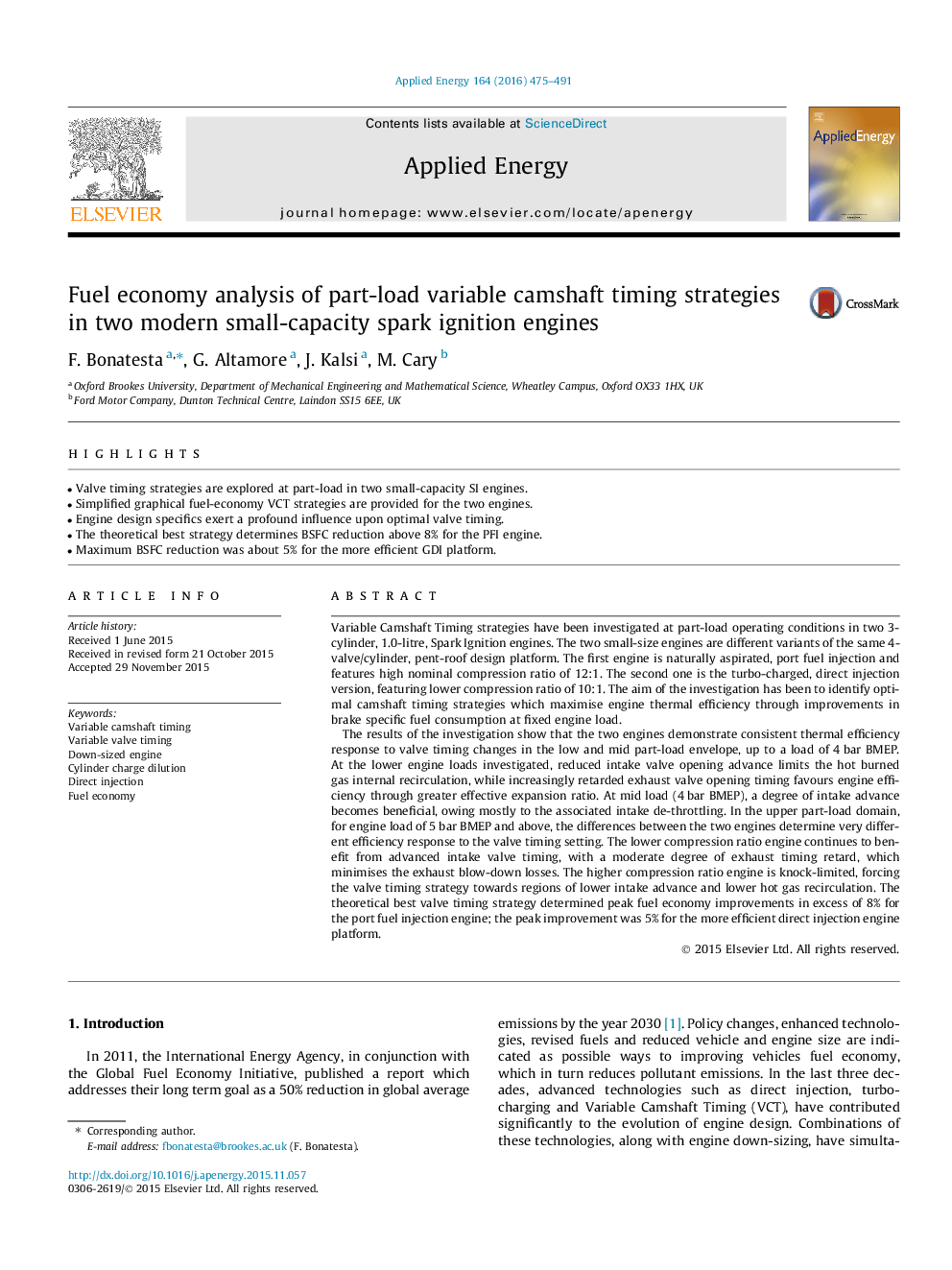| Article ID | Journal | Published Year | Pages | File Type |
|---|---|---|---|---|
| 6684264 | Applied Energy | 2016 | 17 Pages |
Abstract
The results of the investigation show that the two engines demonstrate consistent thermal efficiency response to valve timing changes in the low and mid part-load envelope, up to a load of 4Â bar BMEP. At the lower engine loads investigated, reduced intake valve opening advance limits the hot burned gas internal recirculation, while increasingly retarded exhaust valve opening timing favours engine efficiency through greater effective expansion ratio. At mid load (4Â bar BMEP), a degree of intake advance becomes beneficial, owing mostly to the associated intake de-throttling. In the upper part-load domain, for engine load of 5Â bar BMEP and above, the differences between the two engines determine very different efficiency response to the valve timing setting. The lower compression ratio engine continues to benefit from advanced intake valve timing, with a moderate degree of exhaust timing retard, which minimises the exhaust blow-down losses. The higher compression ratio engine is knock-limited, forcing the valve timing strategy towards regions of lower intake advance and lower hot gas recirculation. The theoretical best valve timing strategy determined peak fuel economy improvements in excess of 8% for the port fuel injection engine; the peak improvement was 5% for the more efficient direct injection engine platform.
Related Topics
Physical Sciences and Engineering
Energy
Energy Engineering and Power Technology
Authors
F. Bonatesta, G. Altamore, J. Kalsi, M. Cary,
